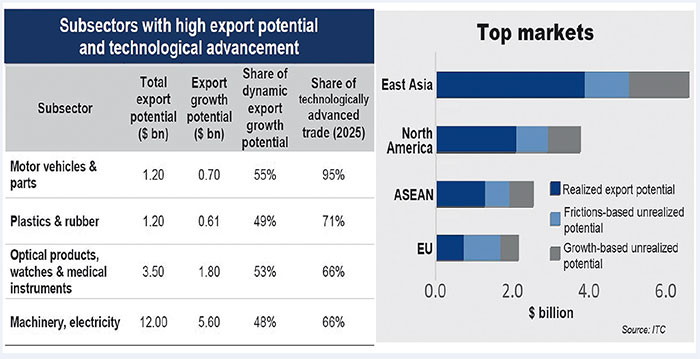The Philippine economy could grow by 5.6 percent instead of the Asian Development Bank’s (ADB) projected 6 percent this year amid the emergence of new coronavirus disease 2019 (COVID-19) variants, according to a preliminary report by the multilateral agency.
However, with increased spending on health care, the economy could also expand by 7.1 percent, the preliminary findings of the COVID-19 Country Assessment Report- Southeast Asia: Recovering from the Pandemic said.
Discussing the report during a virtual briefing yesterday, James Villafuerte, ADB senior economist for the Southeast Asia department, said Southeast Asia’s economic recovery remains tentative, uneven and sensitive to the volatility of the pandemic.
“There are two diverging growth scenarios. So (there are the) high growth economies of Singapore, Philippines, Malaysia and Indonesia; however, for the rest of the economies, the prospects are actually less rosy,” Villafuerte said.
According to the ADB’s projections last December, the Philippine economy is estimated to have grown by 5.1 percent last year, and is projected to grow 6 percent for 2022.
Villafuerte said the differences in performances across economies are driven by several factors, such as the dependence on tourism, continuing resilience of merchandise exports, strong regional participation in global supply chains, dependence on commodities, and dependence on remittances, among others, while some economies are also growing strongly because of their preparedness to follow a digital transformation.
“Despite the solid economic recovery, one negative story coming out is that the output levels in the region for 2021 and 2022 will still remain below the no COVID-19 baseline,” Villafuerte said.
In the Philippines alone, the economy grew by 6.1 percent in 2019 or prior to the pandemic.
“If you look at 2021 for Southeast Asia as a group, average forecasted output level in the region will be around 11 percent below the no COVID-19 baseline and this is really being driven by the sharp output contraction in 2020,” Villafuerte said.
“The Philippines, Cambodia, Malaysia and Thailand have the highest output gap relative to their output trend if you look at it across the region,” he added.
Meanwhile, with the spread of the Omicron variant, Villafuerte pointed out a pressing concern that the expected economic recovery in 2022 would be stalled.
According to Villafuerte’s presentation, scenario analyses show growth is sensitive to COVID-19 behavior and health policy intervention.
“Relative to the Asian Development Outlook baseline in December (of 5.1 percent projected in 2022 for the region)… growth in Southeast Asia could be 0.8 percentage points lower and all economies in the region would actually post weaker growth in 2022,” Villafuerte said.
Based on his presentation, under the “pessimistic” scenario, the Philippines’ growth this year could be 0.4 percentage point lower than the ADB’s baseline outlook of 6 percent for 2022 amid the emergence of new COVID-19 variants, or 5.6 percent.
“Another scenario we analyzed in this report is actually the impact of increased health spending. So we were motivated by a study… which suggests that if health care spending in the region increases in such a way that the burden of disease falls… according to the current best available research advances and practices, growth (in Southeast Asia) could actually be about 1.5 percentage point higher than the baseline and most economies would actually register a growth at least one percentage point higher,” Villafuerte said.
In the Philippines, ADB estimates show that under the “policy” scenario, growth this year could be 1.1 percentage point higher than the bank’s 6 percent baseline, or 7.1 percent.
“So this investment in health seems to be one of the policy levers that the region could use to actually reinvigorate growth,” Villafuerte said.
Villafuerte also discussed the COVID-19 pandemic’s impact on the labor market in the Philippines.
“Although the unemployment rate has eased since 2020, millions of workers are still jobless and working fewer hours and taking part time jobs. The impact has largely been very hard for the informal sector, women workers, young and prime age workers,” Villafuerte said.
While most sectors experienced job losses, Villafuerte said industries with higher skills, such as those in information technology, have not been hit as hard because they can work from home.
“This change in employment composition is actually expected to persist in the medium and long term. Many companies in the Philippines have been rapidly adopting technologies in their business model. However, this is further increasing the demand for higher value-added skills and these developments are likely to increase the mismatch between new skills needed by employers and those possessed by displaced workers,” Villafuerte said.
Villafuerte added the ADB’s preliminary paper suggests strengthening labor market programs to help workers and enterprises make this transition to higher quality jobs and higher value skills.





